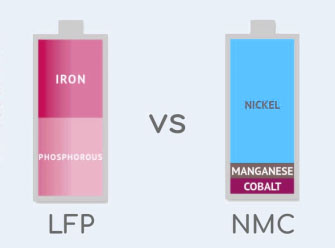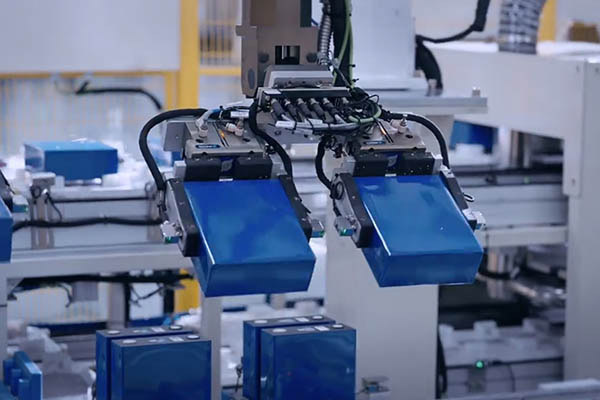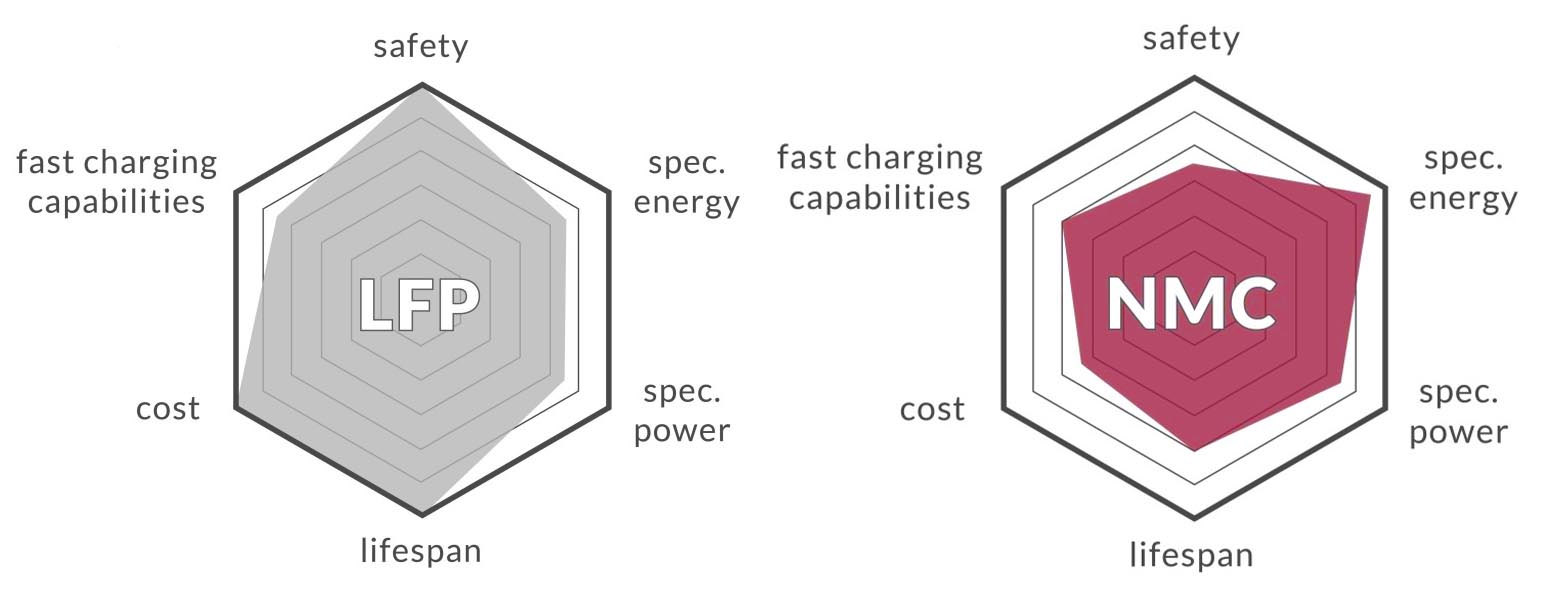1. Introduction
Lithium-ion rechargeable batteries dominate modern energy storage, but not all are created equal. Two leading types—LFP (Lithium Iron Phosphate) and NMC (Nickel Manganese Cobalt)—offer distinct advantages.
Understanding their differences is critical for industries like EVs, renewable energy, and consumer tech. Let’s break down their unique traits.

2. What is a LFP Battery
Lithium Iron Phosphate (LFP) Battery
LFP rechargeable batteries are another type of lithium-ion deep cycle battery, but they use lithium iron phosphate as the cathode material. LFP battery storage is known for their excellent thermal stability, long cycle life, and safety.
While they may have a lower energy density compared to lithium NMC batteries, they are favored in applications where safety and longevity are more critical than compactness or weight.

3. What is NMC Battery
Nickel Manganese Cobalt (NMC) Battery
NMC batteries are a type of lithium-ion battery that uses a combination of nickel, manganese, and cobalt in their cathode. This combination is known for its high energy density, which allows these batteries to store a large amount of energy in a relatively small and lightweight package.
NMC lithium ion batteries are widely used in applications that require high energy output and efficiency, such as electric vehicles (EVs), power tools, and some consumer electronics.

4. LFP VS. NMC Batteries: Direct Comparison
Below is a side-by-side LFP VS NMC battery comparison across critical parameters:

|
Feature |
LFP Batteries | NMC Batteries |
| Chemical Composition | Lithium Iron Phosphate (LiFePO₄) | Nickel Manganese Cobalt Oxide (LiNiMnCoO₂) |
| Energy Density | Lower (~150 Wh/kg) | Higher (~250 Wh/kg) |
| Cycle Life | 3,000–5,000 cycles | 1,000–2,000 cycles |
| Cost Efficiency | Cobalt-free, lower long-term costs | Higher upfront cost (cobalt-dependent) |
| High-Temperature Performance | Excellent thermal stability (low overheating risk) | Requires cooling systems (heat-sensitive) |
| Safety | Inherently stable (non-flammable) | Moderate (needs advanced BMS*) |
| Environmental Impact | Non-toxic, easier recycling | Cobalt mining raises ethical concerns |
| Common Applications | Solar storage, buses, industrial EVs |
Electric cars, smartphones, laptops |
*BMS = Battery Management System
5. Which Battery is Best for You
Your choice depends on priorities:
⭐ For Home Energy Storage Systems (ESS), C&I (Commerical and Industrial) Solar Use, or Budget-Conscious Projects:
LFP solar batteries are unmatched in safety, lifespan (3,000–6,000 cycles), and cost efficiency. They thrive in high-temperature environments and align with eco-friendly goals. Home energy storage system users should prioritize LFP for its reliability and low maintenance. Explore YouthPOWER's LFP solar battery solutions tailored for home solar, solar farms, backup power, and grid storage.

⭐ For EVs, Premium Electronics, or Space-Constrained Applications:
NMC lithium batteries deliver higher energy density for longer range or compact designs, though they require advanced thermal management.
Pro Tip: Blend both technologies—use LFP for stationary storage and NMC for mobility—to balance sustainability and performance.
6. Conclusion
LFP and NMC batteries cater to different needs in the energy revolution. By aligning their strengths—LFP's safety and lifespan vs. NMC's power and compactness—with your goals, you can optimize performance and sustainability.
If you are looking for cost-effective, reliable and safe LFP batteries for solar energy storage use or have any questions for lithium, batteries, please feel free to contact us at sales@youth-power.net. Our professional sales team will assist you.
